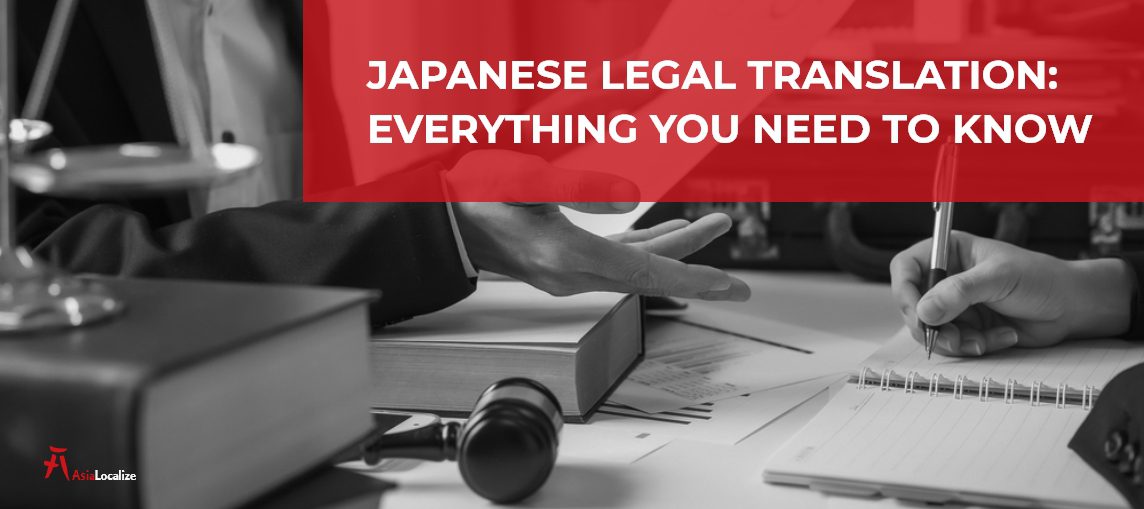With Asia’s large number of inhabitants, it’s considered as the first on the list of the most populated continents on Earth. As of 2021, it holds 59.76% of the world’s population, with a total of 4.69 billion people, according to Worldometer. Nearly 46.4% of the world’s population lives in both southern and Eastern Asia.
Can you imagine the possibilities down there? There are unlimited opportunities in Asia to grow your business exponentially. So yes, without any back and forth thinking, it’s time to pivot your business toward the region, where 2/3 of the world’s population is living, and connect with them through professional Asian translations.
Why Is It So Important To Consider Setting Out in Asian Market and Have Expert Asian Translations?
There is no comparison between Asia and other continents when we talk about the advancing economic growth. We can affirm that many of Asia’s countries have already outpaced Western countries. According to the International Monetary Fund estimates, Asia ranks first in terms of overall GDP in 2021.Away from statistics, acceleration and stability can be your answer to the above question.
Accelerated economic growth with which you can level up your business and establish your presence in Asia is one of the reasons why you should consider reaching Asia’s advancing market. Plus, there’s that economic stability factor that you can depend on when thinking about the unknown. We can sum up the reasons to the following:
- The Striking Economic Growth: Especially in China, Indonesia, Malaysia, South Korea, Taiwan, Singapore, Vietnam, and Thailand.
- The Enormous Consumer Market: Asia’s vast population increases the investors’ opportunities to thrive in the region’s business market. As mentioned before, based on the latest United Nations estimates, 4.69 billion people live now in Asia’s world.
Hence, introducing a service or a product to such a large audience ensures the reach of more ideal customers who have a deep interest in your services. That’s why nowadays Asia catches the attention of ambitious businesses among different industries.
Given the importance of the Asian market power, many investors decided to enter this only enormous population market. To give you an idea, one of the most valuable brands in Asia that left a footprint in Asia’s business market is Alibaba. Bear in mind that Alibaba is a local brand that has, later on, become a global brand; its success was dependent on the local market of Asia.
- Investor-Friendly Environment: Asia is proficient in attracting foreign investors to enter its market because of its facilitation policies: the low taxes, the comprehensive double taxation agreements, the regime of employment law that eases the process of hiring foreigners, and the allowance of foreign ownership and share transfers.
To prove this point, check the following examples:
1- According to the U.S. Department of State, Singapore eases the whole business registration process on foreign investors. You can enter Singapore’s market in one day with SGD 1, together with the low taxes offering. That’s why many investors prefer to kick-start their business expansion in Singapore.
2- According to the U.S. Department of State, foreign investors have access to low taxation in Malaysia. In 2019, for instance, the Malaysian Investment Development Authority proclaimed that companies eligible for the Government’s Principal Hub incentive could pay 10% taxes instead of 24%.
3- Thailand is growing in importance, in comparison with other Asian countries, in terms of economic growth after it has applied the concept of free trade. According to the U.S. Department of State, Thailand’s Board of Investment positioned itself through issuing new incentives in 2019.
Imagine entering a new market and knowing in advance with absolute certainty that you’re going to boom! It’s not a gambling business, but it’s a guaranteed one!

Professional Asian Translations = An Easy Entry To Asian Market
So, have you decided to take a deep breath and jump in the Asian pool? If yes, one of the most significant steps you have to take is letting your service or product speak the Asian language to nurture a strong relationship with your upcoming audience. However, speaking the Asian language means that you have to master 2,300 languages; it’s a wild-goose chase.
Accordingly, you’ll have to decide first on the country (countries) that you’re willing to enter. Once you settle with the market you target in Asia, you’ll end up with a specific language. At this point, you should start your research for a language services provider to be your right hand when you need Asian language translation and professional localization services to provide your business with professional Asian Translations that create mutual understanding and meaningful communications with your Asian audiences.
Wondering where to start with expert Asian translations? Let’s have a look first at the most popular languages in Asia!

The Most Popular Spoken Languages in Asia
As the world’s largest continent, Asia is massive and has the second-highest number of countries. Naturally, it is characterized by a great diversity of languages, cultures, and history. This wide geographical range can be categorized into 6 main regions (or subregions):
- Northern Asia
- Western Asia
- Central Asia
- Eastern Asia
- Southern Asia
- Southeast Asia
How, sometimes, strikingly different these regions are, in terms of ethnic and cultural identities, religious beliefs, history, and perspectives of life, is both beautiful and mind-boggling that one continent brings these people together.
And speaking of venturing into the Asian world and connecting with these people, it’d be wrong to think that one or two languages are enough to speak the whole continent. That’s why professional Asian translations and services come into play!
But first, here are the most spoken languages across Asia:

Arabic
Countries: Iraq, Bahrain, Kuwait, Jordan, Lebanon, Oman, Qatar, Palestine, Syria, Saudi Arabia, Yemen, and United Arab Emirates
Language Family: Semitic Language – making it a relative of Hebrew, Amharic, and many other Middle-Eastern languages.

Bengali
Countries: Bangladesh and some regions of India
Language Family: Indo-Aryan Language – which is related to Punjabi and Hindustani.

Chinese
Countries: Republic of China, Taiwan, and Singapore
Language Family: Sino-Tibetan Language – making it a close relative of Tibetan, Burmese, and other languages that are spoken mainly in Southeast Asia and the Himalayas.
P.S: The Chinese language is the most spoken worldwide. Still, if you meet two Chinese speakers who originated from different regions, they might not understand each other at all. Well, that’s because the Chinese language includes various dialects, most importantly, the Mandarin Chinese dialect.

Filipino/Tagalog
Countries: The Philippines Language Family: Austronesian Language – which are related to Malay and Javanese.

Indonesian
Countries: Indonesia and East Timor United Nations Language Family: Austronesian Language – which is related to Javanese and Filipino or Tagalog.

Japanese
Countries: Japan Language Family: It’s related to the Chinese, Polynesian, and Korean languages.

Korean
Countries: South Korea, North Korea, and an area in China along the border of North Korea Language Family: It’s not related to any other language.

Russian
Countries: Russia, Kazakhstan, and Kyrgyzstan Language Family: Indo-European Language – which is related to French, Spanish, Hindustani, Bengali, Persian, Punjabi, and many other languages.

Persian
Countries: Afghanistan, Iran, and Tajikistan Language Family: Indo-Iranian Language – which is related to Indian languages, including Bengali, Marathi, Hindustani, and Punjabi.

Thai
Countries: Thailand Language Family: Tai-Kadai Language – making it a close relative of Lao.

Punjabi
Countries: Pakistan and Northern India Language Family: Indo-Iranian Language – which is related to Persian and several Indian languages, including Punjabi, Hindustani, Bengali, and Marathi.

Turkish
Countries: Turkey and Cyprus Language Family: Turkic Language – which is related to Turkmen and Azerbaijani.

Vietnamese
Countries: Vietnam Language Family: Austroasiatic Language – making it a relative of Khmer and several languages spoken in Southern China and Eastern India.
Do you know that the most spoken language in Asia is Mandarin Chinese?
Here are the most spoken languages in Asia

Why Is It So Vital To Get on Board With Professional Asian Translations?
Language is our way to communicate with each other effectively. Though 1.348 billion people speak English, according to Statista, it is worth noting that native speakers are less than 400 million. In all honesty, even though you can comprehend the English language, your mother tongue is and will always be the closest to your heart and mind.
So, business-wise, you can’t depend on English solely. If you want to have a decisive influence on Asians, you should pave the way for expert Asian translations leading you to a strong connection and relative understanding.
Here are the benefits of incorporating professional Asian translations into your business strategy:

1. Reach a Large Pool Of Asian Prospects: One of the pros of achieving market expansion is reaching your potential customers. It goes without saying that expert translations will assist you heartily to grab your audience’s attention and form an unbreakable bond between your business and them by bridging the language barriers and focusing on cultural appropriateness.

2. Get High-Quality Specialized Asian Translations : Specialized subject-matter translations shouldn’t be an issue with professional translation service providers. Certified linguistic experts with relevant backgrounds will handle your projects professionally and achieve the expected accuracy on linguistic and technical levels.

3. Cut Corners: Time is money, and we know that it is one of your most important business resources as well. So, it’s vital to assign the translation task to a professional services provider that has the tools and operational efficiency, unlike a freelancer, to get the job done on time, at the lowest expenses, and without compromising on quality.

4. Guarantee a Thorough Translation Process: From translating to editing and proofreading, professional translation providers will provide you with end-to-end solutions that cover all your needs. Plus, project managers will be in your service minute by minute to achieve your satisfaction.
It’s Time to Conquer the Asian Market by High-Quality Asian Translations
Do you want to increase your business revenue? Do you want to stand out amongst your competitors? If yes, it is essential to become familiar with the importance of a region like Asia.
Now is the best time to take the Asia expansion approach into your strategy and act upon it. Moreover, consider having a global Asian translation company by your side to help you reach your Asian audience at a fast pace through high-quality Asian translations.
Whether you need Chinese translation services or Japanese and Korean localization services, play the right way by investing in an experienced Asian translations provider that will arm you with professional translations services to enter whatever market you desire.











